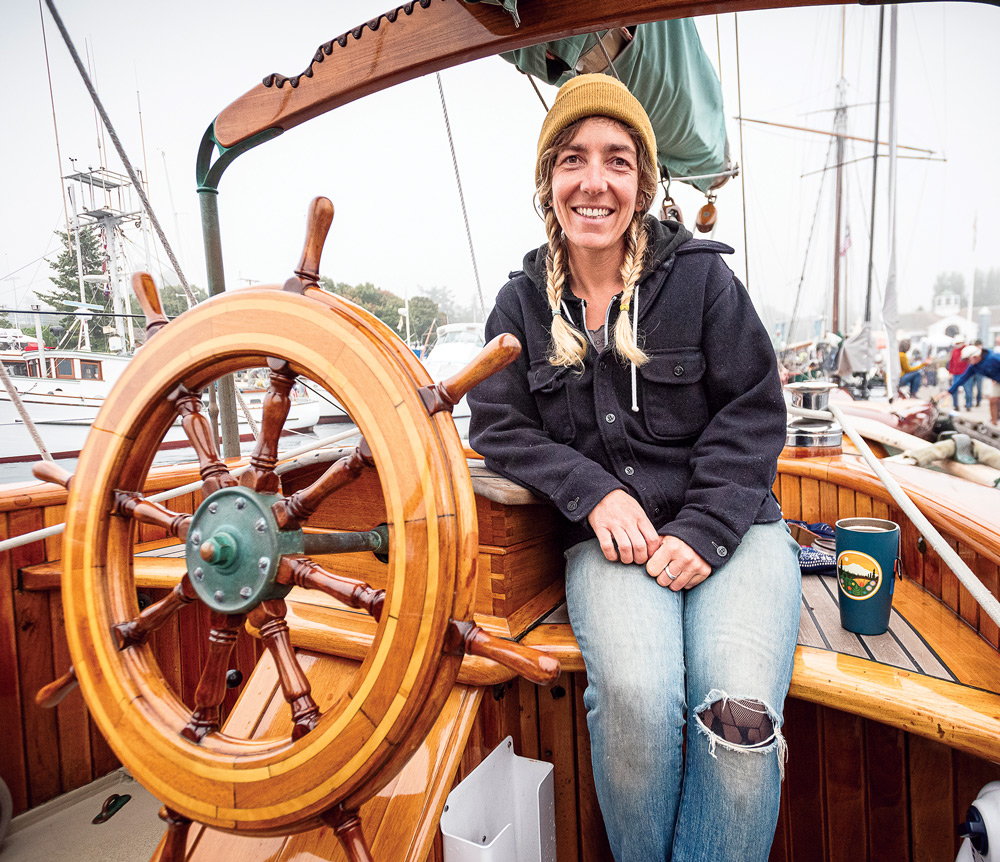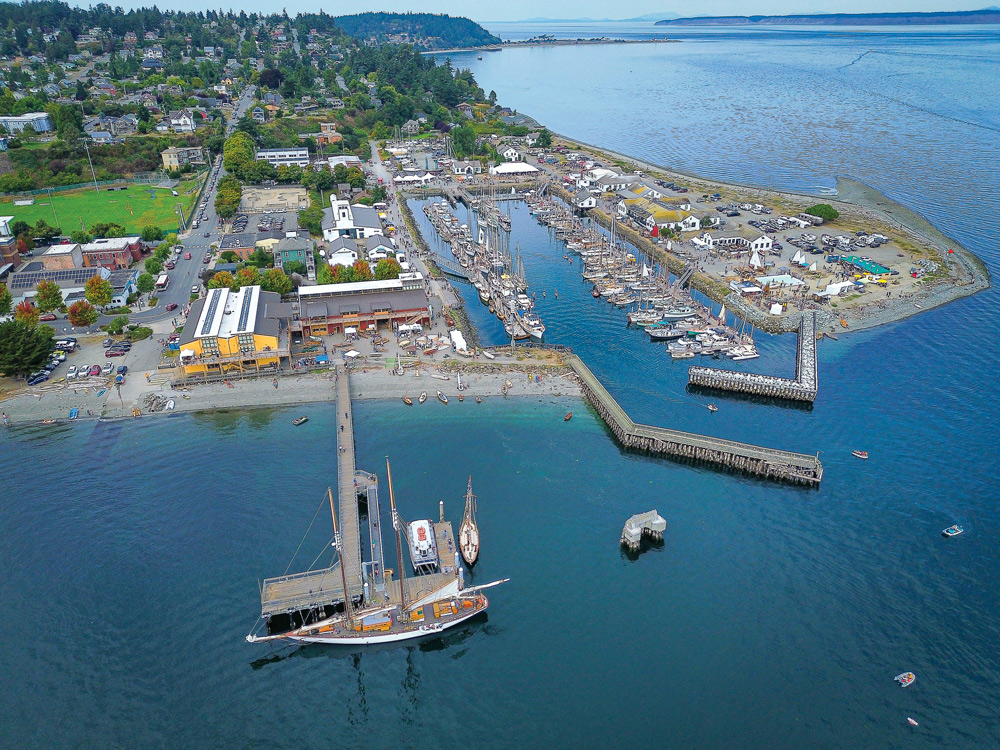Keeping history alive
The Pacific Northwest community gathers each year to celebrate the culture and craft of wooden boats at the Port Townsend Wooden Boat Festival
Who jumps in a truck, drives 1,300 miles from one corner of the country to the other, to see a bunch of wooden boats? We do. Jerry, Marcia, Shelly and me. Together, and separately, the four of us have logged thousands of hours sailing, most of it in wooden boats.

Billed as the largest wooden boat festival in North America, the three-day event includes more than 300 wooden boats from home ports in and around the Pacific Northwest. Hosted by the Northwest Maritime Center, attendees come to hear 100 presenters on diverse topics including yacht design, boatbuilding, maintenance, offshore readiness, nautical photography and adventures on the Salish Sea. With more than 50 exhibitors and dozens of hands-on demonstrations, numerous maritime skills from splicing, carving, cold molding, canoe building and canvas work, to prepping for the Race to Alaska are on display. It’s a rare visual, tactile, sensory opportunity to touch, feel, and smell, the materials, tools, and mixed forest aromas that make a wooden boat.
Known as “The City of Dreams,” Port Townsend is a bastion of maritime history, stitched together through a series of chanced meetings, moments of opportunity, failed attempts, and a loving revival. In 1977 the city hosted North America’s first Wooden Boat Festival, followed by the creation of the Wooden Boat Foundation. In 2008, the foundation opened Northwest Marine Center, with the mission “to engage and educate people of all generations in traditional and contemporary maritime life, in a spirit of adventure and discovery.” The festival represents a grand rendezvous for the greater wooden boat community, attracting owners, crews, maritime trades, patrons, aficionados, and the curiously interested.

Thursday is move in day for the festival, and a corps of volunteers jockey hundreds of boats between the docks and surrounding marina. The evening’s pre-event gathering is a celebration for the festival’s three 2023 Lifetime Achievement Award honorees. Ray Speck, respected boatbuilder and instructor at Northwestern School of Wooden Boatbuilding; Neil Rabinowitz, maritime photographer, who for 40 years has captured and written about the beauty of sailing; and Betsy Davis, Seattle Central College Boatbuilding program alumni, and Executive Director of Northwest School of Wooden Boatbulding. Collectively, these three represent the depth of experience and dedication to maritime preservation that runs deep in the community.
A word to the wise. If time allows, take advantage of all three days of the festival. Friday provides the chance to really dig into the boats and exhibits before Saturday’s crowds arrive. Sunday is the day to see things you missed, and if you’re lucky, get out for a sail. We climb, crawl around, and talk with the owners, loving every minute. Their passion is palpable, and there’s literally hundreds of boats to visit. With this many boats, and all the exhibits, hands-on demonstrations, talks, music, parades, food, drink, races, and on the water opportunities, the experience is more immersive than one could hope for.

Comments